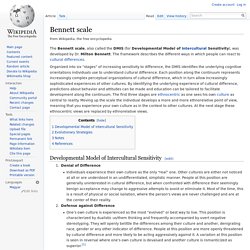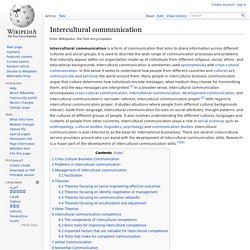

Netherlands. If we explore the Dutch culture through the lens of the 6-D Model©, we can get a good overview of the deep drivers of Dutch culture relative to other world cultures.

Power DistanceThis dimension deals with the fact that all individuals in societies are not equal – it expresses the attitude of the culture towards these inequalities amongst us. Power Distance is defined as the extent to which the less powerful members of institutions and organisations within a country expect and accept that power is distributed unequally. The Netherlands scores low on this dimension (score of 38) which means that the following characterises the Dutch style: Being independent, hierarchy for convenience only, equal rights, superiors accessible, coaching leader, management facilitates and empowers.
Power is decentralized and managers count on the experience of their team members. Employees expect to be consulted. The Netherlands, with the very high score of 80 is an Individualist society. Indulgence. Competence_handouts. Bennett's Developmental Model of Intercultural Sensitivity (DMIS) Bennett scale. The Bennett scale, also called the DMIS (for Developmental Model of Intercultural Sensitivity), was developed by Dr.

Milton Bennett. The framework describes the different ways in which people can react to cultural differences. Organized into six “stages” of increasing sensitivity to difference, the DMIS identifies the underlying cognitive orientations individuals use to understand cultural difference. Each position along the continuum represents increasingly complex perceptual organizations of cultural difference, which in turn allow increasingly sophisticated experiences of other cultures.
By identifying the underlying experience of cultural difference, predictions about behavior and attitudes can be made and education can be tailored to facilitate development along the continuum. Developmental Model of Intercultural Sensitivity[edit] Denial of DifferenceIndividuals experience their own culture as the only “real” one. Evolutionary Strategies[edit] Notes[edit] References[edit] Bennett, M. Intercultural communication. Intercultural communication is a form of communication that aims to share information across different cultures and social groups.

It is used to describe the wide range of communication processes and problems that naturally appear within an organization made up of individuals from different religious, social, ethnic, and educational backgrounds. Intercultural communication is sometimes used synonymously with cross-cultural communication. In this sense it seeks to understand how people from different countries and cultures act, communicate and perceive the world around them. Cross Cultural Business Communication[edit] Cross Cultural Business Communication is very helpful in building cultural intelligence through coaching and training in cross-cultural communication, cross-cultural negotiation, multicultural conflict resolution, customer service, business and organizational communication. Intercultural competence. A theoretical construct for cross-cultural competence, language proficiency, and regional expertise.

Intercultural competence is the ability to communicate effectively and appropriately with people of other cultures:[1] Appropriately. Valued rules, norms, and expectations of the relationship are not violated significantly.Effectively. Valued goals or rewards (relative to costs and alternatives) are accomplished. In interactions with people from foreign cultures, a person who is interculturally competent understands the culture-specific concepts of perception, thinking, feeling, and acting.
Intercultural competence is also called "cross-cultural competence" (3C). Cultural intelligence. Cultural Intelligence, cultural quotient or CQ, is a term used in business, education, government and academic research.

Cultural intelligence can be understood as the capability to relate and work effectively across cultures. Originally, the term cultural intelligence and the abbreviation "CQ" was developed by the research done by Soon Ang and Linn Van Dyne as a researched-based way of measuring and predicting intercultural performance. The term is relatively recent: early definitions and studies of the concepts were given by P. Christopher Earley and Soon Ang in the book Cultural Intelligence: Individual Interactions Across Cultures (2003) and more fully developed later by David Livermore in the book, Leading with Cultural Intelligence.. The concept is related to that of Cross-cultural competence.[1] but goes beyond that to actually look at intercultural capabilities as a form of intelligence that can be measured and developed.
Four CQ capabilities[edit] CQ is developed through: Global Thinker and Author. Url?sa=t&rct=j&q=&esrc=s&source=web&cd=8&ved=0CFIQFjAH&url=https%3A%2F%2Fidiinventory.com%2Fwp-content%2Fuploads%2F2013%2F08%2FIDI-Chp-161-9-16-20091. From an Idea to Your Book, in Minutes!